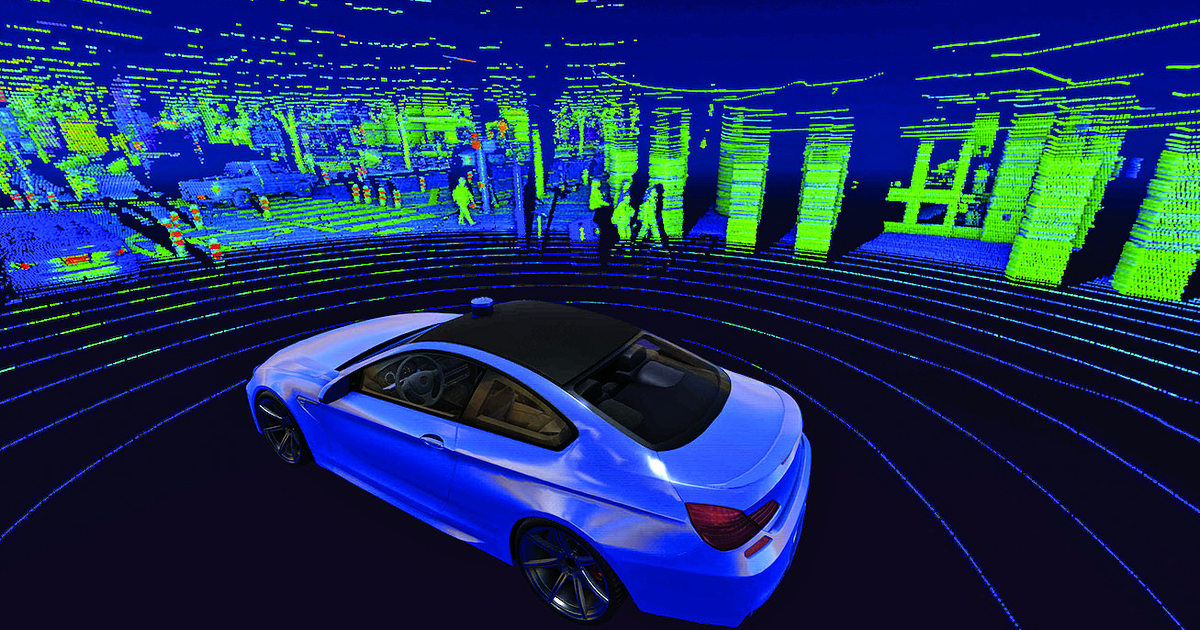
Self-driving vehicles may take a long time to hit the road in large numbers. The sensors driving much of their progress, however, are starting to go mainstream.
Lidar technology is trickling into human-driven vehicles in some cases. In others, it’s finding scale in different industries.
The latest example of lidar for human-driven vehicles came earlier this week when Volvo unveiled its EX90, which contains the first fruits of its five-year collaboration with lidar provider Luminar. A standard front-facing lidar unit will underpin driver-assist features in the crossover.
With distinctive shapes resembling spinning chicken buckets or hockey pucks, lidar units once symbolized self-driving ambitions. Volvo’s designers fashioned a far more subtle integration of Luminar’s Iris lidar unit into the EX90’s roofline.
It signals a shift into a new era — just not the one initially expected. But waiting for self-driving vehicles to materialize wasn’t just the wrong business case for lidar providers, it was akin to “asking the wrong question,” said Luminar founder and CEO Austin Russell, on hand for the EX90’s reveal in Stockholm.
“It isn’t about when, it’s about what and how,” he said. “Today we have our answer. It’s by enhancing the driver, not replacing the driver.”
If that course is apparent today, it’s one that’s been brewing for a considerable amount of time. Audi introduced lidar from supplier Valeo in A8 production vehicles in 2017 for use in its Traffic Jam Assist product, which was ultimately never activated.
Honda introduced a similar Level 3 automated driving system last year that incorporates five next-generation lidar sensors, also from Valeo. In April, Mercedes-Benz showcased front-facing lidar on its S-Class and EQS models, separately saying it would use Luminar’s Iris lidar in future Level 3 automated systems.
Israeli startup Innoviz will supply its lidar for 2023 BMW i7 electric vehicles and, in what may be the biggest overall design win to date, said in August it will provide lidar for Volkswagen Group brand vehicles equipped with advanced driver-assist systems as well as autonomous vehicles.
Broadly, “we’re seeing the industry as a whole take the technologies, both the hardware and software developed for fully autonomous vehicles, and bring them to driver-assist markets,” said Sam Abuelsamid, principal mobility analyst at Guidehouse Insights. “They’re leveraging the investments they’ve made in this technology and finding ways to get some return.”
Instead of lidar being integrated into self-driving vehicles, it could find its way further down the levels of automation into Level 1 automated applications, such as automatic emergency braking.
Even as almost all automakers have pledged to make automatic emergency braking standard equipment on all new cars sold, many are finding problems within phantom-braking incidents, in which systems detect an obstacle that actually does not exist and hit the brakes.
Along similar lines, most automatic emergency braking systems have problems detecting pedestrians at nighttime, according to an August study issued by the Insurance Institute for Highway Safety. That came after earlier studies from AAA found automatic emergency braking and driver-assist systems perform poorly in the rain.
Lidar could augment camera- and radar-based systems, providing a fresh layer of redundancy, Abuelsamid said.
“The reality is most of the systems out there are camera-based and, frankly, don’t work very well,” he said. “They’re very limited in their capability. Lidar can work in complete darkness and, in conjunction with radar and cameras, provide a much more robust perception system.”
But the cost of adding those lidars can be prohibitive. Early prototypes could run as much as $75,000 per unit for self-driving test vehicles, but for automotive production, most are targeting a $500-per-unit price point.
Days before Volvo showcased the EX90 with Luminar’s lidar, Ouster and Velodyne, two of the industry’s biggest lidar companies, agreed to a proposed merger expected to close in the first half of 2023. One impetus was a push toward wider scale, which subsequently could drive down those costs.
“We’re in the infancy of the cost curve right now,” Angus Pacala, Ouster co-founder and CEO, told Automotive News. “Those costs are driven mostly by volume, and that’s why scale is so important for reaching an affordable future.”
Ouster shares have lost 77 percent of their value since Jan. 1, while Velodyne, a pioneer in the lidar realm that early on established itself as a front-runner, has seen its shares decline by 80 percent this year.
But both companies found sales in other industries. Ouster reported revenue of $11.2 million at the end of the third quarter, a 44 percent increase year over year, while Pacala said the company found “immense growth” in the robotics and industrial sectors. Velodyne has found volume in similar industries.
Cracking the automotive markets is more complicated, Pacala said. The markets are building from scratch, there’s not yet mass deployments, and lidar providers are slowed by yearslong automotive product cycles.
“But there’s still a long-term, exciting opportunity to grow into the automotive space,” Pacala said. “The lidar industry needs to consolidate, there’s an opportunity to build a stable leader, with the scale and resources that deliver a product that’s truly affordable and can promote mass adoption.”